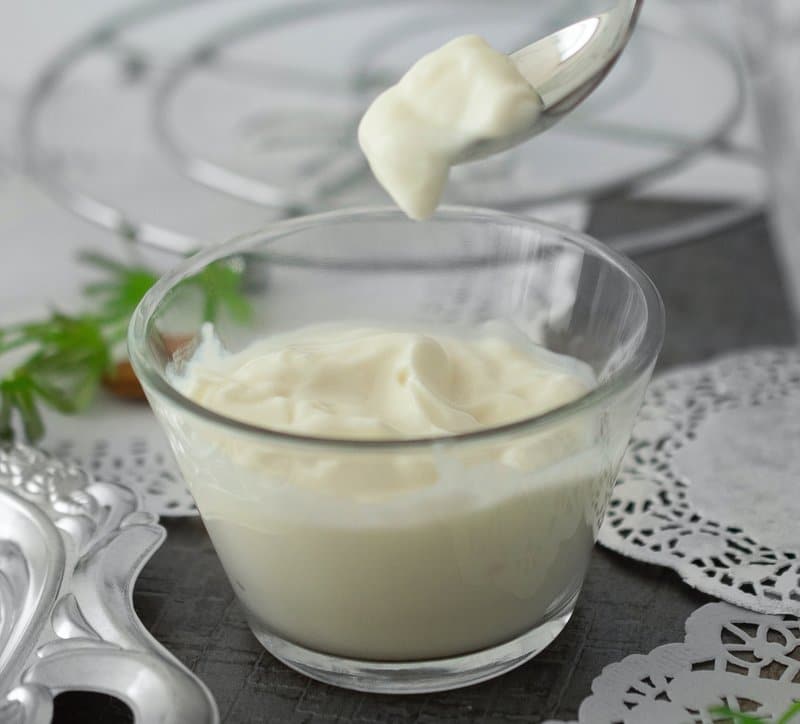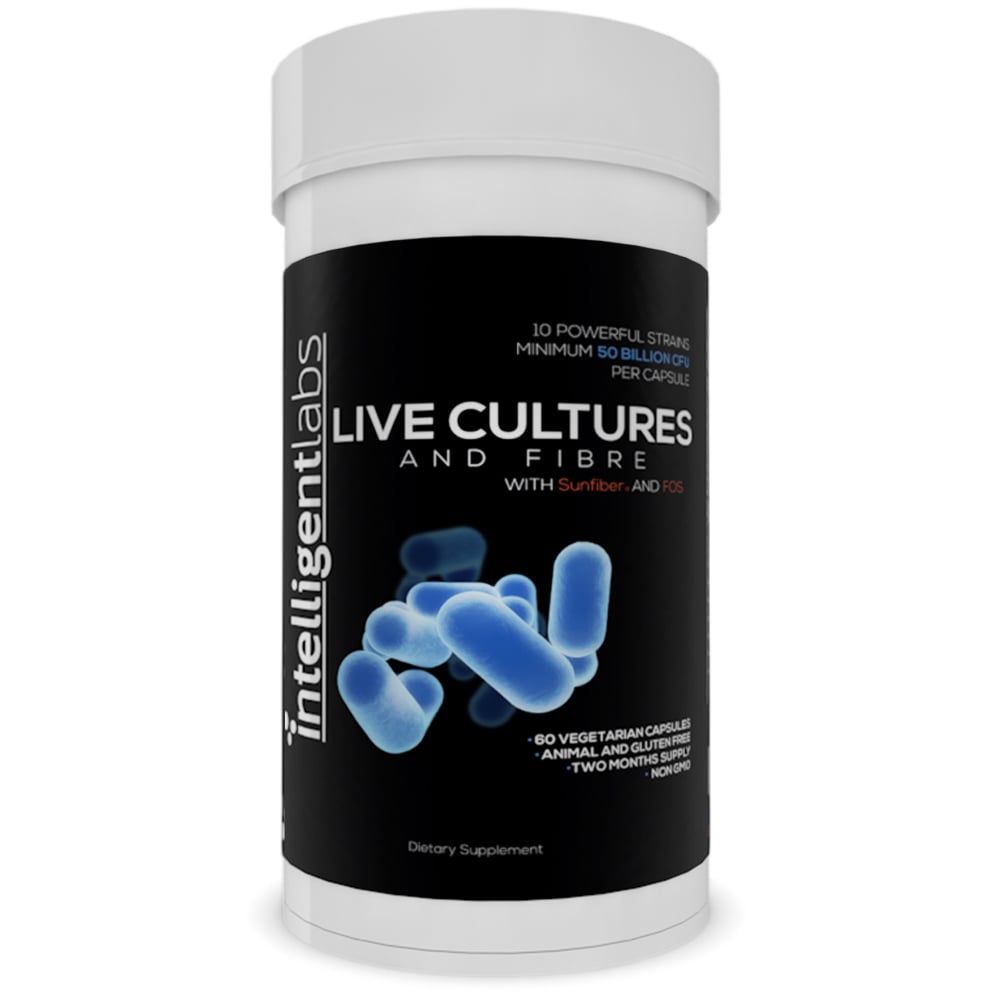On the surface, yogurt appears to be the ultimate snack – delicious, nutritious, versatile. It’s perfect for the weight conscious – it’s low in calories and incredibly filling at the same time. Nutrition-wise, it’s rich in protein, calcium, and potassium. Best of all, it also has yogurt live cultures that help promote good gut health.
But are these active cultures in yogurt really worth all the hype? And is yogurt the best source of these cultures? Well, I won’t keep you waiting – scroll down to find out!
Table of Contents
Do All Yogurts Have Live Cultures?
Before we answer the question, let’s define live cultures first:
So, basically, live cultures are “good bacteria” that live in the gut. It controls the growth of “bad bacteria” and plays a key role in digestion, immunity, and overall health. Since approximately 70% of our immune system cells reside in the gut, it’s important to keep our gut healthy.
Unfortunately, our lifestyle and diet can cause bad bacteria to flourish and overwhelm the good guys. This is where live cultures from food (and supplements) come from. By topping up your store of good bacteria, balance is restored and health is improved.
That being said, let’s go back to the question…

So, technically, all yogurts have live cultures. This is because you can’t transform plain milk into yogurt without introducing ‘starters’ or live cultures of good bacteria. Without these good bacteria, you’re left with spoiled milk full of bad bacteria.
Now, here’s the thing:
Some yogurts are treated with heat (pasteurised) afterwards. This process essentially makes the yogurt more stable with a longer shelf life. BUT it kills off the beneficial bacteria, meaning it’s no longer a yogurt with live cultures.
It’s therefore important to look at the label for this reason – you must look for products that contain active probiotics or live cultures.
So, what are these live culture strains added to yogurt?
The most common ‘starter’ cultures are lactic acid producing bacteria called Lactobacillus bulgaricus and Streptococcus thermophilus. They’re added to milk and after several hours of fermentation at a certain temperature, yogurt is made.
Many manufacturers also add live cultures to their yogurts (this is in addition to the original starter cultures used to make the yogurt).
The strains added vary by manufacturer, but the most common ones used are Lactobacillus acidophilus, Lactobacillus casei and Bifidobacterium strains. The Latin names may sound intimidating, but these extra live cultures are nevertheless a good thing. The more good bacteria there is in your yogurt, the better it will be for your gut!
The Truth About Yogurt Live Cultures: Not All Yogurts Are Equal
With yogurt’s ever-increasing popularity, many brands are looking to cash in. So, it’s not surprising to see tons of options in the supermarket. Go to the dairy or yogurt section, and you’ll see what I mean.
Now, it’s easy to get confused with all the different colors and attractive packaging lining up display shelves. But here’s the simple truth: NOT all yogurts are healthy. Some – especially the sweetened and “low-fat” kind – are downright unhealthy due to high sugar content.
Here are some of the healthiest yogurts with live cultures:
Dairy-based yogurt
Greek yogurt
Greek yogurt is probably the ‘superstar’ of yogurts. It’s famous not because it’s ‘Greek’ (researchers think it actually originated in the Middle East, not Greece), but because it’s healthier than regular yogurt!
To make Greek yogurt, the whey (liquid portion) is drained from regular yogurt. This results in a thicker and creamier yogurt. This simple procedure gives Greek yogurt twice the protein and slashes the carb content, too. So, if you’re on keto, you definitely need to give this type of yogurt a try. Of course, when Greek yogurt live cultures are added to the mix, it becomes even healthier.
Additionally, kitchen aficionados like Greek yogurt because it withstands heat better than regular ones. This is why you’ll often see Mediterranean recipes calling for some Greek yogurt!
Goat milk yogurt
Most commercial yogurts are made from cow’s milk. While cow’s milk is great, some people are allergic to it. Enter goat milk yogurt. While the taste may require some getting used to (it’s got a strange aftertaste), it’s actually pretty healthy.
Goat milk yogurt has more protein, calcium, and potassium than cow milk yogurt. Plus, it’s got lower sugar (lactose) content, too. And if you’re wondering if you can make Greek yogurt from goat’s milk, well, yes you can!
Sheep milk yogurt
For the lactose intolerant, sheep’s milk is a blessing in disguise. It has lower lactose content than either cow or goat milk. Plus, sheep’s milk has 60% more protein, vitamins and minerals than cow’s milk.
With smaller fat globules, it’s also more homogeneous and thus more easily digestible. Taste-wise, there’s no strong aftertaste like goat’s milk, so if you’re not a fan of goat milk, you should definitely try sheep milk yogurt. For added goodness, choose sheep milk yogurt with added live cultures!
Vegan yogurt
Vegans have plenty of yogurt options, too. Look for yogurts made from nut milk like almonds, coconuts, or soy. Double check to make sure it’s not pasteurised after production. And, of course, look for vegan yogurt that has added live cultures in it.
So, Is Yogurt The Best Source Of Live Cultures In The World?
For thousands of years, fermented food like yogurt has been our major source of live cultures. But is it the best source? Well, it was – until live culture supplements came along!
You see, live culture supplements are engineered to last for months and even years. And unlike yogurt, it doesn’t need to be refrigerated. It’s not going to be as tasty, of course, but the good thing is it’s not going to go rancid anytime soon.
To help illustrate the benefits of live culture supplements, let’s compare Intelligent Labs Live Cultures with regular yogurt:
| Regular Yogurt with Live Cultures | Intelligent Labs Live Cultures | |
 |  | |
| No. of strains | Depends on the brand, but sometimes 2, 4, or more strains | 10 strains sourced through DuPont Danisco |
| No. of colony forming units (CFU) | Around 1 billion CFU | Minimum of 50 billion CFU at expiry date (we fill each capsule with 150 billion CFU) |
| Does it include prebiotics? | No prebiotics added | Yes, prebiotics (or fiber) feed the live cultures inside the capsule so they don’t die off |
| Sugar | Yes, many commercial yogurts have added sugar | No sugar added |
| Shelf life | 1-2 weeks (max of 1 month) | Two years |
And the winner is?
Without a doubt, live culture supplements offer better value for money than regular yogurt. In terms of live cultures, yogurt is simply outmatched. It’s delicious, yes, but if you care more for your gut than your taste buds, then supplements are the way to go.
All of our live culture supplements – for adults, women, and kids – contain 60 capsules. At only 1 capsule a day, a single bottle will last you a good 2 months.
FAQs About Yogurt Live Cultures
Are yogurts with live cultures safe during pregnancy and nursing?
Yes, it’s safe to eat live culture yogurt while pregnant or nursing. Since you need more calcium at this stage, you should get your hands on Greek yogurt since it’s healthier than regular yogurt. Live cultures may reduce complications like vaginal infections, gestational diabetes, allergies, and more.
Is yogurt safe for those with lactose intolerance?
Depends on the kind of milk used to make the yogurt, really. For the most part, non-dairy yogurt is good for lactose-intolerant folks. Sheep milk yogurt is a good option, too. Check the label though to make sure the yogurt is safe for you.
Can yogurt live cultures cause diarrhea? Bloating? Yeast infection? Gas? Constipation? Stomach pain?
Yogurt live cultures normally don’t cause these issues, but some may experience this as a side effect. It’s actually a sign that the active cultures are working and killing off the bad bacteria in the gut, so it’s generally nothing to be worried about. Alternatively, if you’re somehow allergic to the yogurt, then you may also experience these symptoms.
Is yogurt good for dogs?
Dogs have guts too, and like us, they can benefit from live cultures. But take note, most dogs are actually lactose-intolerant. So, choose something that contains low lactose levels.
Also, make sure to choose plain low-fat or non-fat yogurt for your dog and read the ingredients labels carefully. Avoid flavored yogurts! Because they are packed with sugar. Also, never feed your dog yogurt that contains Xylitol artificial sweetener, as this ingredient is toxic to dogs.
Avoid full-fat yogurt, giving your dog too much fat in his diet, can lead to stomach upset, or even pancreatitis, a serious and fatal illness. You can start by giving your dog a small amount and see how he reacts, and then if he doesn’t have any symptoms, you can add a small spoonful of yogurt to your dog’s regular meal once in a while.
How often should you consume yogurt live cultures?
If you truly want to reap the benefits of yogurt active cultures, then you need to make it a daily habit. In fact, according to the USDA, anyone over age 9 should consume 3 cups of dairy, this includes milk, yogurt, cheese, soymilk, and other milk-based desserts. If you eat these other dairy products, then 1 cup of yogurt a day will most likely suffice.
But then again, when you consider how many live cultures are in a single yogurt cup compared to a single capsule of Intelligent Labs Live Cultures, then you can see why supplements are the ideal choice!
Click here to find out when’s the best time to take your live cultures supplement.
Conclusion
Without a doubt, yogurt – especially Greek yogurt – is one of the tastiest and healthiest snacks around. But when it comes to live cultures, there’s a much better source. Now that you know the truth about live cultures in yogurt, will you give live cultures supplements a chance? Or will you stick to good, ol’ yogurt? Do let us know your thoughts below!





